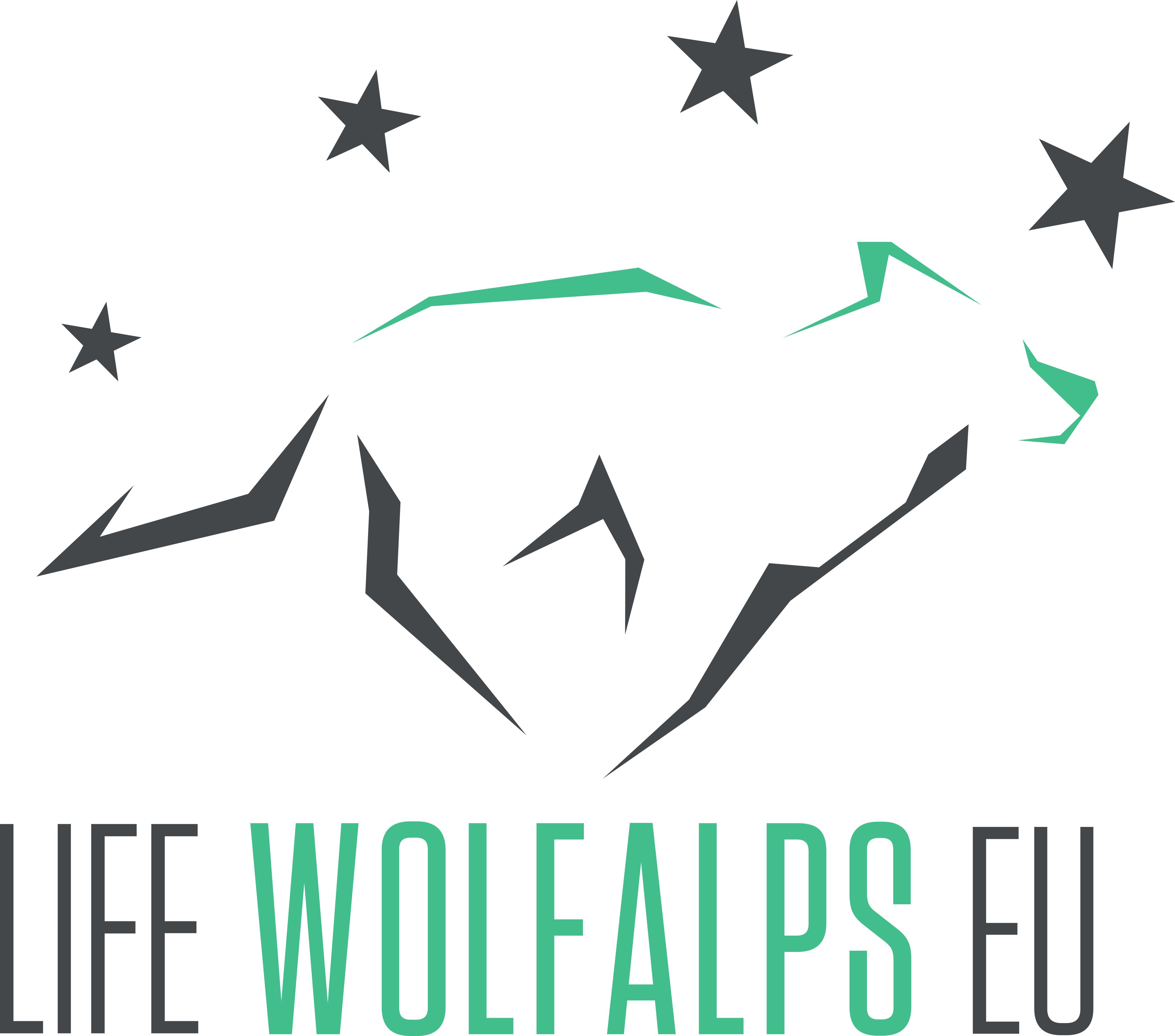The LIFE WOLFALPS EU represents a best practice example of wolf management in areas where wolves have been present for 20 years and in areas where they have only just returned. A best practice model is the so-called Wolf Prevention Intervention Units, which represent a preventive measure to avoid conflicts as much as possible and to provide help in emergency situations. Testing this model in different situations will provide important data when developing a "best management model".
The WPIUs will include experienced technicians who have successfully worked with farmers; the team will also include mediators. Your experience can be very helpful in facilitating coexistence. Especially in newly populated areas, these teams should incorporate their experience and know-how from previous projects. Despite the hunters' initial resistance to participating in this project, they are now a supporter of the project and will take part in various workshops and missions. In addition, farmers in affected areas that are too large to be looked after by the project or other organizations should be encouraged to work efficiently themselves. The WPIUs should also be used here and help to pass on suitable techniques. Above all, testing various assessment tools will play an essential role. The HBLFA Raumberg-Gumpenstein will specifically focus on testing GPS bands and various sensors.
The aim is to examine the possibilities of combining current sensors and GPS technologies with the possibilities of telecommunications networks for innovative instruments in herd protection and to create the basis for panic detection within a herd, as occurs in the event of an attack by a predator.
Overall, this should help to support animal owners in herd and pasture management, to help them fulfill their duty of care and thus also to minimize the effects of large predators on grazing, even in impassable terrain, in which the necessary emergency management is also supported becomes.
Herd management, especially animal care, especially in the context of extensive pasture farming under alpine conditions, is labor-intensive and very time-intensive. Finding the herds in difficult terrain takes up a lot of time. By using GPS data to locate grazing animals and transmitting it to mobile devices, the animal carer has the opportunity to specifically locate his animals and reduce the time spent doing this to a minimum, as time-consuming searches are no longer necessary.
By combining it with other environmental sensors, e.g. B. for temperature, opens up further areas of application such as notification of cold snaps. This makes it possible to relieve the burden on the workforce or the providers, especially in the area of alpine farming, which is under strong pressure.
According to the current state of technology, the reaction time can be reduced in the event of an attack by a predator because, as initial experience from Tyrol has already shown, unusual movement patterns can be roughly recognized by installing appropriately adapted virtual fences. However, this detection depends heavily on the defined boundaries and therefore only offers a very coarse spatial resolution when detecting a possible attack. However, there is currently a lack of reliable data on the suitability of affordable or economically justifiable systems (reliability, robustness, accuracy, user-friendliness).
This data will be of great importance for successful herd management and herd protection in the future.
In summary, the goals of the HBLFA Raumberg-Gumpenstein are as follows:
- Training of so-called emergency teams (WPIU - First aid Wolf Prevention Intervention Units)
- Development and testing of operational principles for emergency teams
- Evaluation of positioning and sensor systems for herd protection
- Establishment of participation platforms for farmers and hunters, also to communicate the results of studies on predator-prey relationships and to incorporate these findings into management plans
General established principles at EU level are:
- Fragmentation of responsibilities and responsibilities in administration and management
- Illegal killings (hunting and poison)
- Conflicts with agriculture (pasture farming) and hunting
- Social conflicts
- Fragmentation of suitable habitats
- Hybridization of wolves with dogs
This results in the following project goals for the entire project:
- Establishment of cross-border (DNA) monitoring, management and protection
- Reducing conflicts between humans and wolves by developing and disseminating various prevention measures that go beyond simple technical herd protection
- Improving knowledge of wolves and promoting coexistence, with a focus on farmers and hunting









